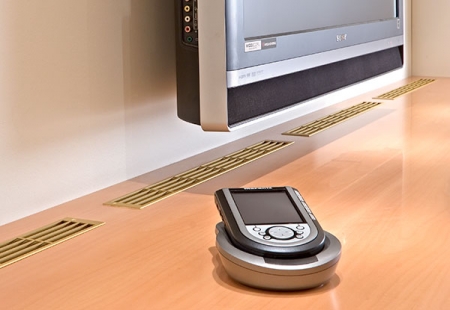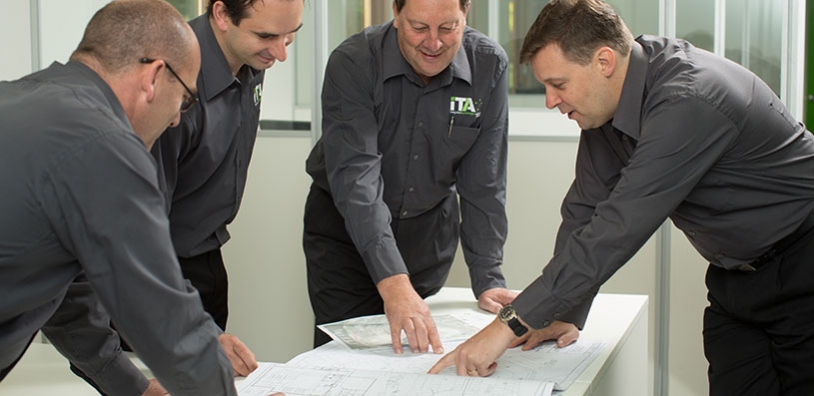These days, we live high-tech lifestyles where connectivity is paramount and technology is constantly changing and evolving in all areas of our lives – at home, at work and during our leisure time. This will only become more true as the years pass.
So, why is it that builders are still not including smart home infrastructure as a standard inclusion in new home builds? As technology becomes more and more integrated into our everyday lives, shouldn’t our homes reflect this?
A Solution Tailored to Everyone
ITA’s Project Design and Energy Management specialist Alan Moore says that, at present, new technologies are rapidly transforming the way home owners interact with new services. As it stands, builders typically don’t have a delivery process that is fit to meet these modern home needs.

Today, more and more people are demanding a range of lifestyle solutions to complete an overall vision for the modern home. The home features these relate to may include:
- Entertainment rooms
- Multi-room audio
- Security & access control
- CCTV
- Intelligent lighting
- Whole home data sharing
- Intercom & phone
- Irrigation control
- Stored water control
- Heating & cooling control
- Renewable energies
- Smart devices used to control home functions
- Foxtel & antenna sharing
If builders are not yet equipped to install these modern systems, who then are we meant to turn to when designing a new home?
Home Automation Systems for Builders
As Alan Moore explains, any builder or architect will tell you it takes years to develop the skills to build a modern home due to the extensive knowledge base that is required. Not only do you need to have a design process that will help clients understand what the finished product will be, you also need to implement a building program that can successfully deliver on what you have promised.
“There has been a seismic shift in lifestyle technology that supports the way we like to live, be secure, be connected and be entertained in the home,” Moore says.

“It’s a new world of expertise that builders and architects are [as of yet] unable to resource in-house under their current business structure.”
The building industry is also fragmented. Builders don’t receive the training required to design or implement this aspect of home construction – and nor do their electricians.
So, who is responsible for installing this new generation of home integration technologies?
A New Profession for a New Age
After the emergence CEDIA (Custom Electronic Design and Installation Association) in 1989, a new profession emerged to meet the new market need: Systems Integrators.
“For a range of reasons, smart home infrastructure has been difficult for builders to self-manage and provide informed advice to their clients,” Moore says.
“Typical arrangements include bringing the Smart Home team to design the wiring and electrical infrastructure for the entry levels of homes as well as higher level design and full implementation of systems for larger, luxury homes where the needs are [more] extensive.”
More and more, Systems Integrators are working collaboratively with interior decorators to create and enhance any living environment, and bring our homes into the 21st Century.
"Homes that do not take into consideration home integration technologies are costly to adapt to changing needs."
The Benefits of ITA’s Home Integration Systems
 At ITA, it is our job to connect you with innovative modern lifestyle solutions that meet your personal needs and your budget.
At ITA, it is our job to connect you with innovative modern lifestyle solutions that meet your personal needs and your budget.
Our approach to home building is a collaborative one, starting with the development of a brief that captures all of the design elements that are most important to the home owner. This brief then forms the basis for the selection of the most suitable systems that will work together to bring your home into the future.
After we have selected the best technologies for your home, ITA works closely with the builder to rollout the project. When it’s time for you to move in, we help to make the settling process easy by seamlessly integrating any existing appliances, entertainment systems and home office devices.
For more information on home automation for new homes, click here or email ITA at info@integratedtechnologiesaustralia.com.au.
Alan Moore’s Top 5 Essential Considerations Before You Build:

1. Have the design discussion before you build.
To successfully accommodate the lifestyle systems commonly incorporated into today’s homes, it is necessary to identify what they will be, the functions they will perform and how they will be incorporated into different spaces.
When considering automated lifestyle systems, there are implications as to what electrical infrastructure is needed, where they will be stored and how cabling will be delivered throughout the house. For instance, nearly every new home should have some form of central wiring closet designed to accommodate the main distribution components. Modern homes have a lot more appliances and cabling to support the range of systems being implemented.
2. Thorough data design is imperative.
When designing a new home, equal consideration needs to be given to cable data and wireless coverage. While most people are told you only need Wi-Fi, this is not the case. Wi-Fi and cable data should be treated separately, and a room-by-room plan should be established for what services are needed to support both wired and Wi-Fi capability. Wi-Fi demands are ever-increasing – particularly with the saturation of smart phones and tablets –meaning that the typical home is poorly serviced by inappropriate Wi-Fi solutions for the existing level of demand.
3. A dedicated systems hub.
Many home lifestyle systems require master control equipment located centrally to the wiring distribution. A home design should evaluate which systems require centralised devices, and spaces should be dedicated to each of these. Many designed home automation projects implemented many years ago routinely allow effortless updates to be undertaken because a dedicated distribution point and wiring design was undertaken. On the contrary, ITA’s experience is that homes with no formal design are difficult and costly to adapt to changing needs.
4. Outdoor considerations.
After you have laid your driveway and built your new front fence, it is not a good time to re-think adding an intercom and gate control. At best it will be extremely difficult to add at this later stage. If you are having a tall front fence and restricting how people enter in and out of your property including side gates, roller doors, front and back doors, you need to fully consider any potential intercom, keyless entry and CCTV monitoring early on in the project.
5. Define anything you are deferring for the future.
Even if you want to put something off until after you have moved in, ensure the design takes into consideration how this will be implemented later on. Have the conversation with your designer about the minimum work needed to ensure this option will be open for you in the future. This may include underground conduits, particular wiring or a structural requirement for the builder to implement. Examples may include outdoor audio or garden lighting, future TV’s with the appropriate content cabling, new controlled gates and water tank control, to name a few.
For more information on home automation for new homes, click here or email ITA at info@integratedtechnologiesaustralia.com.au.
Must Read
ITA on 1 January 1970
Corporate Energy Saving Strategies
ITA provides innovative energy-saving solutions for corporations looking to cut annual energy costs. Get the best value & assurance across your whole corporation. Learn how. ...
Read more